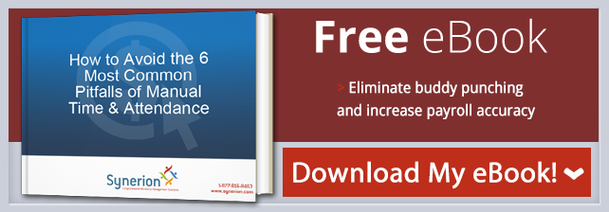 Absenteeism costs businesses millions of dollars in productivity and sales loss every year. Combating that loss isn't an easy battle though. Absenteeism is caused by an combination of factors and creating a unified plan to reduce it can be challenging. Use these ideas to reduce employee absenteeism in your workplace.
Absenteeism costs businesses millions of dollars in productivity and sales loss every year. Combating that loss isn't an easy battle though. Absenteeism is caused by an combination of factors and creating a unified plan to reduce it can be challenging. Use these ideas to reduce employee absenteeism in your workplace.
Create Enforceable, Fair Policies
If you don't have an attendance policy, you're losing the battle on absenteeism before you begin. Employees need to have a clear understanding of what constitutes absenteeism and what the consequences are for not following that policy. A policy also empowers managers to reduce absenteeism by giving them a clear directive on what will and won't be tolerated in the workplace.
Track Compliance
Once a policy is in place, it must be enforced. While managers are ultimately responsible for monitoring and enforcement, you should make that process easy. A workforce management system is a simple way to not only track employee attendance, but alert managers when employees are failing to follow the attendance policy. Workforce management systems also allow upper management to track the losses experienced with absenteeism and investigate discrepancies across departments. Tracking actual compliance is instrumental in curbing the abuses associated with time off.
Reward Perfect Attendance
Remember when you were a kid and received a perfect attendance award? Not only did it feel great to be acknowledged for your accomplishments, but it felt nice to receive a reward for over-performing. Just like when you were a child, acknowledgement goes a long way in today's workforce. Employees who consistently exceed attendance expectations should be rewarded. Start a perfect attendance recognition program that awards time off or rewards to employees who report for their shifts as scheduled. A perfect attendance reward not only shows you value your most reliable employees, but also motivates other employees to achieve better attendance.
Work with Employees
Reducing absenteeism in the workplace doesn't just require a change of behavior on your employees' part. It may also require a change in behavior on your own part. To keep your workforce happy and your offices staffed, take a look at your current schedule to see if slightly altering hours can reduce absenteeism. Talk to employees and managers to better align company needs with employees’ personal responsibilities. Parents may have improved attendance if their workday started after school starts, while younger workers may prefer to get into work early and get out sooner. Better attendance can often be achieved by melding both company and employee schedules.
Value Health
One of the biggest causes of absenteeism is illness. Few employees want to take days or weeks off work because of the flu or a busted knee. Making health a priority at your workplace is a great way to improve the overall well-being of your employees and reduce absenteeism. Start an employee health initiative or subsidize gym memberships for your staff. If sick days aren't currently being offered, discuss whether allocating time for illness would be possible with HR. While those additional days off may cost the business profit in the short-term, over time, sick days prevent illness from spreading around the office and reduces overall absenteeism due to illness. By placing a real value on your employees' health, you can also reduce absenteeism.
Reducing absenteeism requires a clear understanding of your current losses and reasons why your employees are failing to achieve attendance goals. Once you've developed a policy, established a system for tracking attendance, and used some tactics like adjusting employee schedules and placing a higher value on employee health, you can start measuring the decrease in absenteeism.
